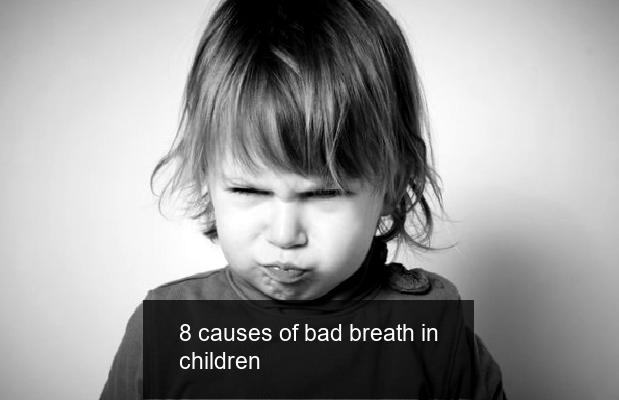8 causes of bad breath in children
Bad breath, called halitosis, can also be seen in children. Although it varies according to age groups, the incidence in school-age children is considered to be about 15 percent. It is of great importance to determine the source of bad breath, which is seen in two types, physiological and pathological, and to plan the treatment without delay. Associate Professor from Memorial Şişli Hospital, Department of Pediatrics. Dr. İsmail Yıldız gave information about bad breath in children and its causes.

Bad breath can have many causes.
Physiological halitosis can vary from person to person at any time. Physiological halitosis may differ from time to time depending on the child’s fluid consumption, saliva production, oral hygiene, mouth and nose flora, microbiota, chemical, biochemical, hormonal effect of the last food eaten, hunger or satiety status, sleep state, and the state of enzymes in the gastrointestinal tract. There is no underlying systemic disease or pathological condition in physiological halitosis. Pathological bad breath has many causes. These; It may be due to subjective halitosis, halitosis due to intraoral causes, halitosis due to respiratory tract causes, halitosis due to gastrointestinal problems, and problems in blood gas.
8 precious causes of bad breath
1. Physiological halitosis:Bad breath on waking up in the morning can be seen due to lack of mouth secretion, dehydration, some vitamin-mineral deficiencies (for example, vitamin A, vitamin B12, iron, zinc) and hunger.
2. Bad breath due to intraoral causes: Saliva, bacteria, epithelial cells and food residues on the tongue can accumulate and cause bad breath. Gingivitis, intraoral infections, dry mouth, ulcers in the mouth, aphthae in the mouth, dental diseases, dental caries and soft palate diseases can be counted.
3. Bad breath due to respiratory tract causes:Throat infections, tonsillitis, throat infections, tonsil stones, sinusitis, rhinitis, chronic nasal congestion, postnasal drip, foreign bodies in the respiratory tract, bronchiectasis and lung infections can be counted.
4. Bad breath due to systemic diseases:Diabetes, diabetic coma, metabolic diseases, poisonings, blood diseases, malignancies and kidney failure can be counted.
5. Bad breath due to the gastrointestinal tract:Gastroesophageal reflux disease, diverticulum in the esophagus, strictures in the esophagus, gastric outlet strictures, duodenal strictures, intestinal absorption defects, liver failure, Helicobacter pylori infections and parasitic diseases can be counted.
6. Bad breath due to drug use:Nitrates and nitrites, cytotoxic spies, phenothiazines, amphetamines, dimethyl sulfoxides and chloral hydrate can be counted.
7. Bad breath due to food and drinks: Onion, garlic, cabbage, radish, alcohol, coffee, dairy works, etc. countable.
8. Bacteria:The presence of bacteria producing volatile sulfur compounds, organic compounds and nitrogenous compounds in the mouth causes bad breath.
It is considered chronic if it lasts longer than two months.
Chronic bad breath is defined as persistent bad breath for more than 2 months, either intermittently or uninterruptedly. A number of tests can be used to diagnose a child with bad breath. For this, tests such as gas chromatography and halimeter can be done. Thus, a diagnosis of pathological halitosis can be made. Bad bad breath disturbs both the person and the people around him. For this reason, the underlying cause should be clarified and treatment should be given for the cause. The treatment approach of bad breath should be planned multidisciplinary. Evaluations should be made by pediatric health and diseases specialist, dentist, otolaryngologist and related specialist physicians, and treatment should be planned by finding the underlying cause.
Children should be informed about oral and dental hygiene.
A detailed patient history and a complete and systemic physical examination are required in a child with bad breath. After the history and physical examination, necessary laboratory tests are performed. The cause of bad breath is found and treated. The most common underlying cause of bad breath is problems with the health of the mouth and teeth. Therefore, our children should be educated about oral and dental hygiene. Brushing the teeth and tongue is a valuable approach to prevent bad breath.
Ways to prevent bad breath
- It is valuable to consume plenty of fluids to prevent dry mouth.
- Increasing saliva secretion is valuable in terms of oral purity and hygiene. Consumption of sugar-free chewing gum increases saliva secretion.
- The use of mouthwashes is valuable in maintaining oral hygiene.
- It is recommended to limit foods that increase bad breath.
- Despite oral and dental hygiene and cleanliness, children whose halitosis persists should be evaluated and treated by the relevant specialist departments in terms of underlying systemic and possible diseases.

